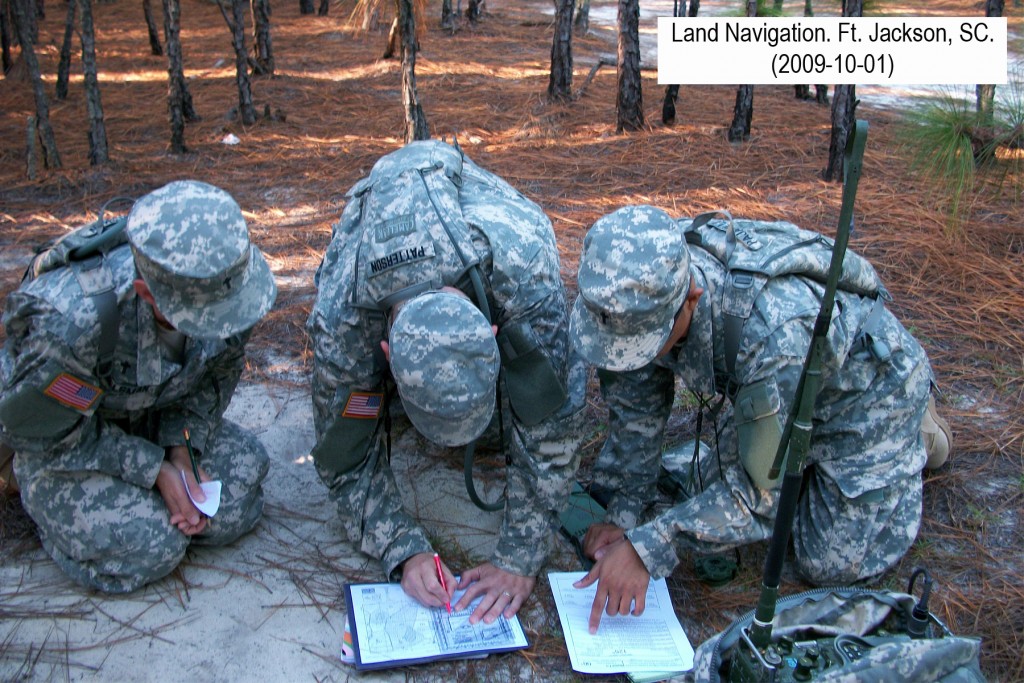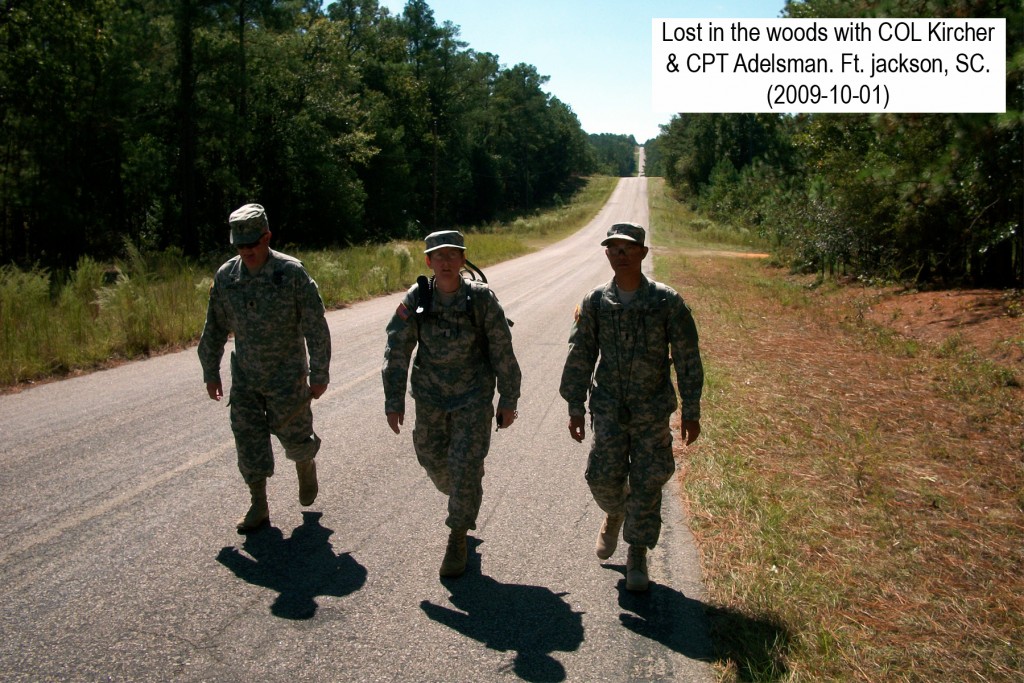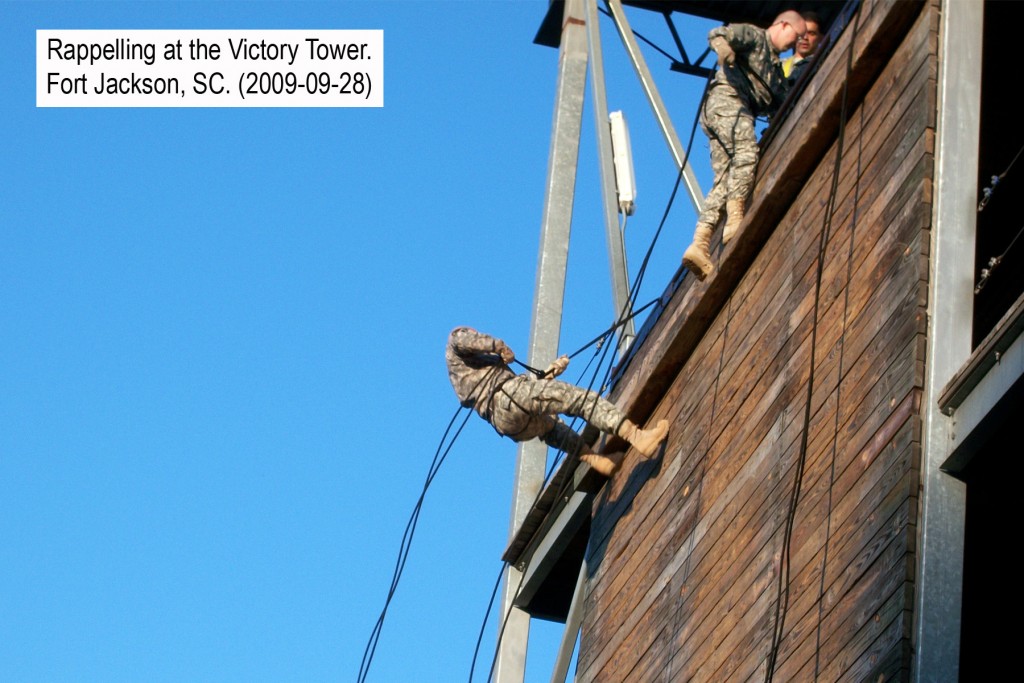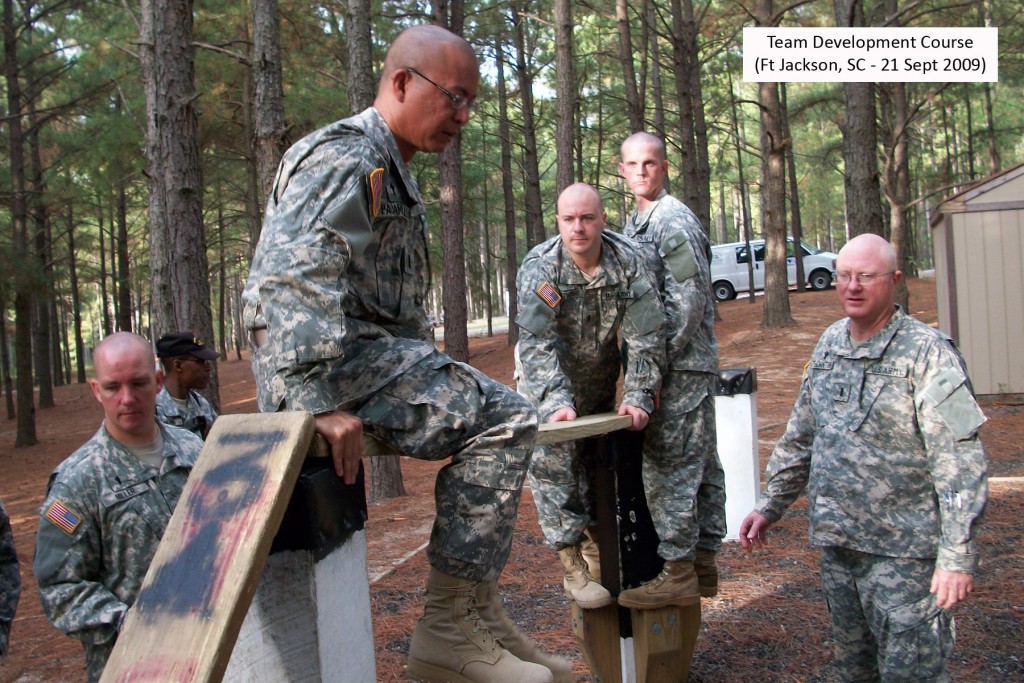We put our knowledge of navigation and radio operation skills to good use today. We headed out to the woods at 0400H for an early morning LandNav after getting our coordinates and ETA at the rally point. Along the way, there were checkpoints that we were supposed to find and radioed to the base. We did find everything, except the rally point.
Map Reading & Land Navigation
Today we learned land navigation using a compass, a military map, and a protractor (GPS were verboten)! We practiced map reading in the classroom, then went out on the fields in front of the school house to count our paces (how many paces an individual makes in 100 meters distance) to aid us with our land navigation, especially when we have no electronics (such as a laser distance counter) to rely on.
PMCS
Victory Tower
We formed up in front of the school house at 0500H for an ealy movement to the range. Today’s adventure is conquering the “Victory Tower” by climbing up using the rope ladders and rappelling down. The NCO’s did a fantastic job helping and educating us during this course. It is to simplistic to say I’ve enjoyed it. So far this has been my favorite part of all the practical instructions.
First Aid
Today we learned first aid. A group of NCO’s from a medical unit came to the school house with their gear and mannequins to show us basic life-saving techniques in and out of the battlefield. They also showed us how, in extreme necessity or lack of basic equipment, our uniforms can be used as life-saver!
Gas Chamber
Today’s exciting adventure is the unforgettable visit to the gas chamber this morning. The event started with a briefing in front of the chamber – where we were regaled by the NCO’s with horror stories of casualties and survivors who barely made it. Then they called those with asthma and placed them in front of the line (that included me – actually I was at the very head of the line)! We put our mask on, then were told to enter. I noticed right away that the NCO stirring the pot of chemicals was enjoying himself. It did not bade well for us. Once everyone got in, we were told to loosen up our masks. One NCO approached me and asked me to recite my social security number. That was the last thing I remember…
Team Development
We woke up early today and were bused to one of the ranges for what they call “Team Development.” It is basically an obstacle course, but instead of working the course as individuals, we were taught to put our heads and strategies together as a platoon to overcome the obstacles.
Preparing the Beret
A beret is a “round flattish cap made of felt or cloth…worn by local peasants.”
So from peasant’s headgear, the humble beret has become the normal, day-to-day wear of the American Soldier. The black color was authorized to be worn by all US Army soldiers just recently (November 2001); previously it was only authorized for Army Rangers. Although there were pre-formed berets available for purchase, we at the chaplain school were taught how to prepare the beret the old fashioned way.
The black (not pre-formed) US Army beret usually comes from the clothing store stiff. So that it can be formed properly, the owner has to first (1) shave it until it’s thin or pliable enough to “hug” the head of the wearer; (2) after shaving, the beret has to be soaked in lukewarm water until completely wet; (3) after soaking, the beret is squeezed (not wrung) of excess water, then (4) shaped on the wearer’s head and left there until completely dry. Doing this will form the beret according to the contour of the wearer’s head.
Sunday on Post
Sunday on post for a Roman Catholic priest, is spent mostly in chapels within the garrison. Since there were a lot of basic trainees who are Roman Catholics and there was only one resident Roman Catholic chaplain on post, the Roman Catholic priests-students at the school-house were always welcome to help with Masses at the main post chapels, as well as in the others chapels, on Sundays.











